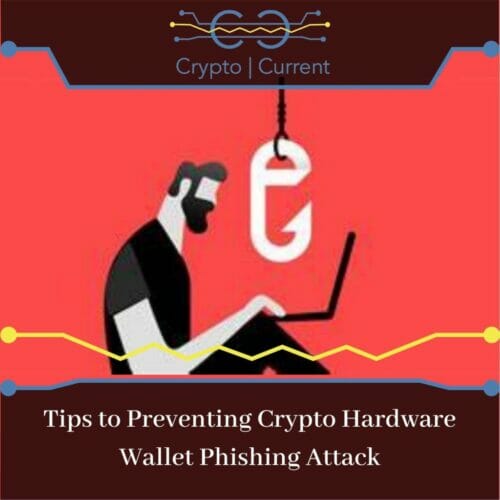Tips to Prevent Phishing Attacks (Buy a Hardware Wallet!)
The unfortunate happening is that several crypto holders are dissuaded by regular crypto scam schemes as well as phishing schemes. But how will a regular crypto user know and prevent such attacks so as not to lose funds in the long run?
Identify the Source
Phishing emails end up being successful through attempts of tricking holders to download software, clicking on a link they ought not to or just going to a page where they will put in their personal details (their seed phrase).
As of July, Ledger (a hardware wallet) reported that a data breach occurred that affected the database of a lot of its customers of which most remain the target of phishing attacks. Many of their customers were said to receive very believable emails telling them to install an updated version of the Ledger Software.
Customers could then identify the malicious actors by paying close attention to the email address of the sender, ending with “ledgersupport.io,” having the “G” and “D” alphabets switched. Emails coming in at unexpected times claiming that a customer is already a victim of a scam and trying to get details whether through a link, email or over the phone, extra scrutiny should always be given.
Validity of Program Updates
In September, a user on Electrum stated that the loss of about $15 m in crypto (bitcoin) seemed to be linked to a Phishing scheme that the users of the wallet have been experiencing since 2018.
Despite that the attack on this wallet was quite new a few years ago, now just a Google search or mail to the wallet company will verify if a hacker is aiming for particular users or not.
Anti-phishing data usually speak for itself
False extensions of Google Chrome have dissuaded many users into providing the details needed to gain entry to their wallets. During March, a tricky Ledger Live scam extension made away with about 1.4 million XRP, which is over 800000$ after the cryptocurrency rose to 0.58$ in value.
Though, trusted organizations have been implementing ways to curb these attacks on those who mostly use Web-based browsers to manage their crypto holdings. In September, brave (a privacy-based browser) reported that it would be including anti-phishing aids from PhishFort, a cybersecurity firm.
Sharing with the Cryptosphere
When any user successfully identifies and prevents a phishing attempt or is the sad victim of one, the process through which he can prevent others from falling victim is to relay their experience on Twitter, Reddit, or their own blog as well as a mail to a cryptocurrency news agency.
Coin holders might at times get information on the tactics used by con artists from sites of high-profile targets such as Trezor & Ledger, but those pages are usually kept deep at the troubleshooting FAQ sections.
Sharing your experience via social media, though not very reliable can provide the possibility of more transparency and awareness to improve the security of users’ funds.
Okereke has a passion for researching blockchain and cryptocurrency. He enjoys creating long form educational content to inform others on the opportunities in this space.










